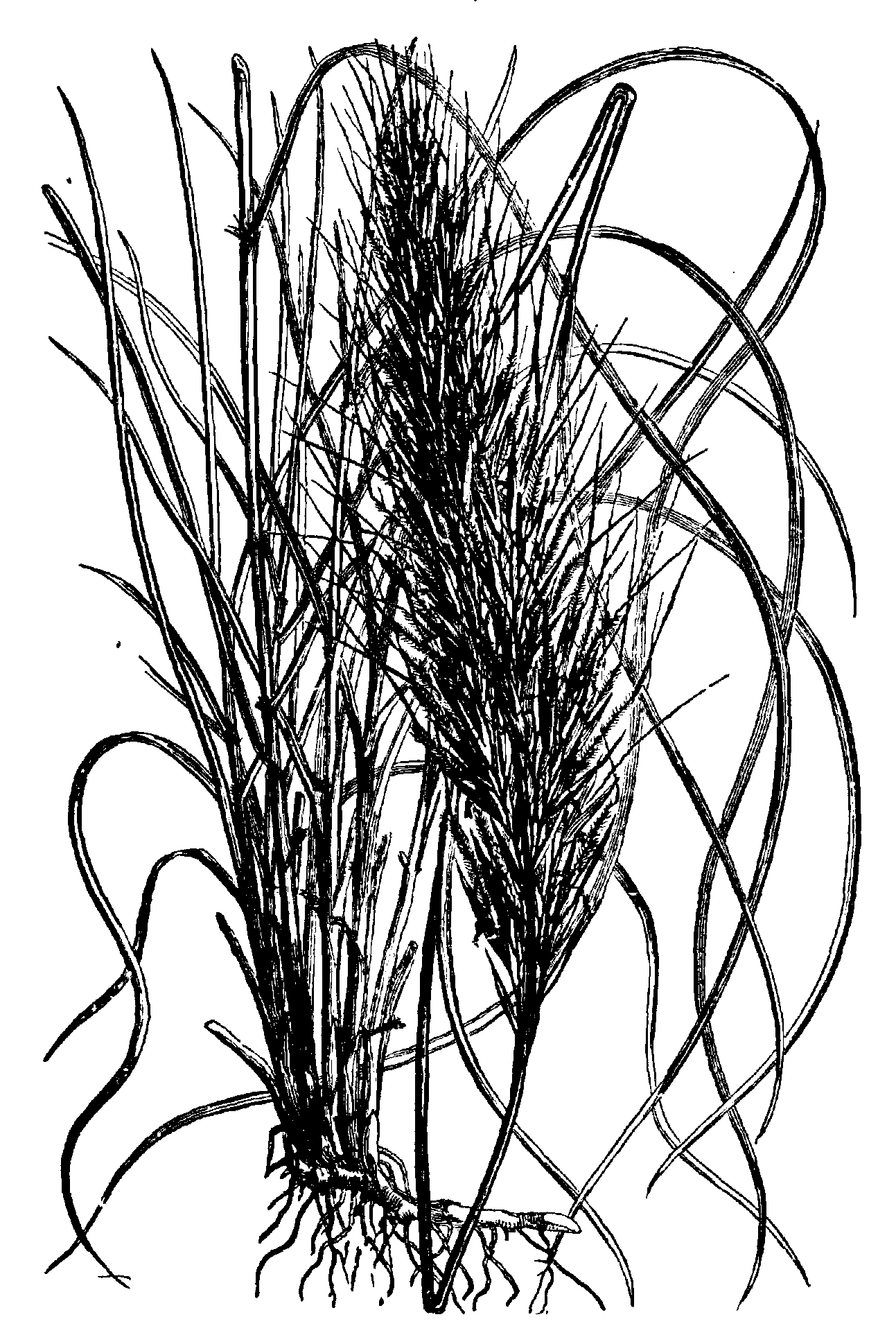Esparto Grass
The shortage of source material for paper-making caused by the explosion of print after the removal of the Paper Duty, combined with the reduced supply of cotton from America due to the Civil War, caused paper-makers to seek previously untried materials. Lloyd at first used straw, but his researches uncovered the potential use of esparto grass, a tough grass imported from the southern coast of Spain since the 1840s for paper-making in Scotland. He visited Thomas Routledge1 at his paper mills at Eynsham near Oxford to see how this new material could be used in papermaking subsequently obtaining esparto from Routledge for his mill at Bow—the process proving a success.
Routledge had obtained a monopoly on the supply of esparto from Spain so Lloyd promptly went to Algeria in North Africa, where it was plentiful, and investigated its potential. He leased the rights to harvest esparto on 100,000 acres and set up business centres at Oran and Arzew. He also opened operations at Cartagena, Almería and Águilas in southern Spain where the grass is also called atocha. The price in London was £3 a ton in 1867.
Once in Bow, the esparto was cut into centimeter lengths and subjected to bruising before boiling. Lloyd patented a bruising process that cut out a lengthy stage and reduced the amount of chemicals needed.
Of esparto, Crory wrote:
The gathering and utilising of this plant is a most important enterprise, on public grounds, and Mr Edward Lloyd has made his mark in connection with Esparto even more clearly than as a paper manufacturer, printer, or newspaper proprietor”.2
The Algerian economy also benefited, hence the memorial to Lloyd in Holy Trinity Church, Algiers, honouring him as "the first to show the value of alfa fibre for the manufacture of paper". Lloyd was the biggest single operator and the most efficient, but many others were engaged in it too. They were generally paid a 5% commission by buyers, yielding a hardly lavish return of three shillings a ton.
As a cargo, the large bulk to weight ratio of esparto made transport expensive and ill-packed bales wasted money. Lloyd first compressed the esparto into bales using hydraulic pressure, so making it more economical to transport. He chartered his own shipping and so kept the cost under control.
The efficiency of his operation soon led to surpluses that he sold to other papers, so alleviating the general shortage of fibre caused by the Cotton Famine when American exports dried up during the Civil War of 1861-63. These accounted for about three quarters of British supplies. The Confederates first boycotted them in the hope of enlisting British help (unlikely since cotton was harvested by slaves), then the Unionists imposed an embargo.
Even when supplies resumed, recovery was slow. The cotton merchants made a fortune while Lancashire suffered a catastrophe. Lloyd’s Weekly ran an appeal for the relief of victims and contributed the profits from higher than average sales in December 1862, a grand sum of £3,676.
Lloyd’s method of doing business combined adventurous thinking, research into the subject-matter and willingness to risk failure. It was a winning formula. Using esparto and straw, he supplied other newspapers at home and increasingly in the British colonies, so becoming an industrialist as well as a publisher.
Establishing a paper mill and growing his own raw material made Lloyd the only Victorian newspaper proprietor to apply vertical integration—ownership and control of every aspect of the supply chain—to his business.
In 1863, Lloyd went on to buy an old paper mill at Sittingbourne in Kent. It was ideally placed with plentiful fresh water and easy access for sea-going shipping. His agent stored straw there, and fire destroyed the mill later that year.
After building new plant, Sittingbourne and Bow Bridge were both in use. To begin with, Sittingbourne was used to process the pulp ready for making into paper at Bow. The bigger of the two machines at Bow was 90in wide.
In 1876, Lloyd installed a machine 123in wide at Sittingbourne, built for him by George and William Bertram of Edinburgh. This giant caused consternation, and even some misgivings on the part of George Bertram, but Lloyd’s judgment was vindicated and the machine was a great success.
In 1877, he imported a 126in machine from the US. This marked the final move from Bow Bridge and coincided with the transformation of the Chronicle into a national newspaper. At some point after 1877, the mill at Sittingbourne was renamed The Daily Chronicle Paper Mill.
Lloyd continually experimented with anything that contained fibre. North African dwarf palm was being used in 1880, but it was dropped, probably due to the cost of £8–£10 a ton (whereas esparto still cost as little as £3). Hemp and waste paper were among the other raw materials used. In 1875, Crory expected home-grown flax to take over the English market, but that never happened. Both flax and esparto are suitable for the finer types of paper.


